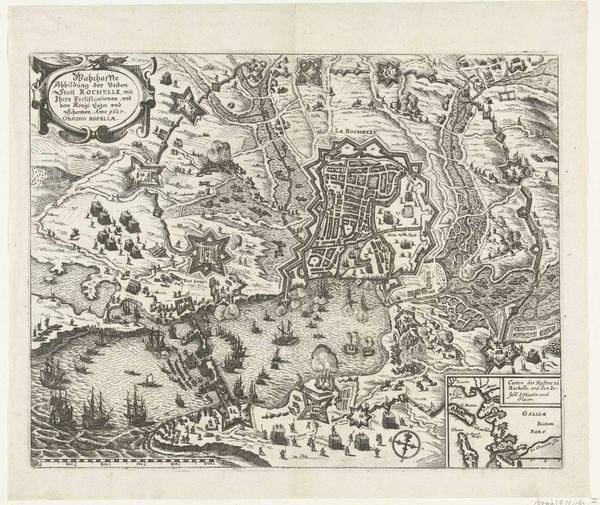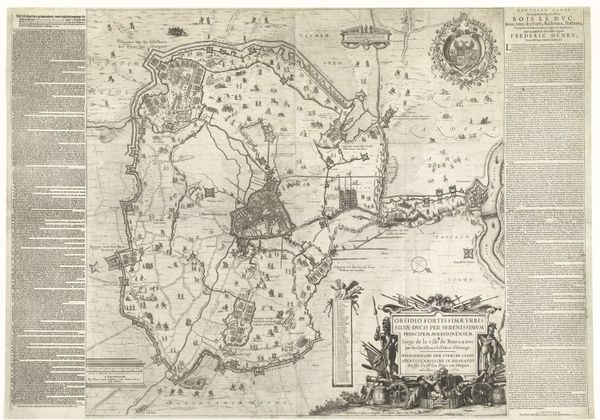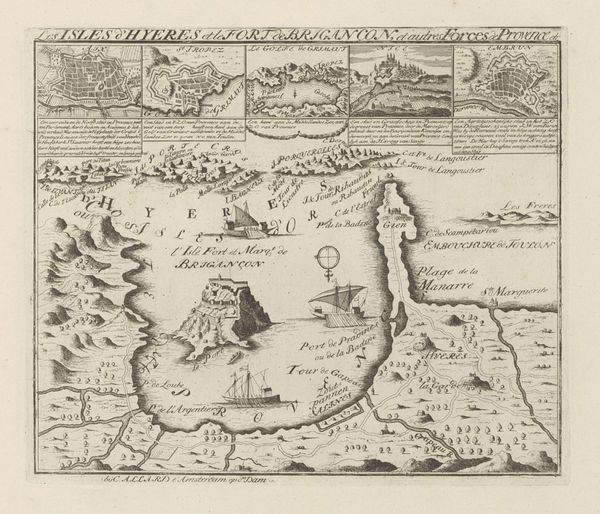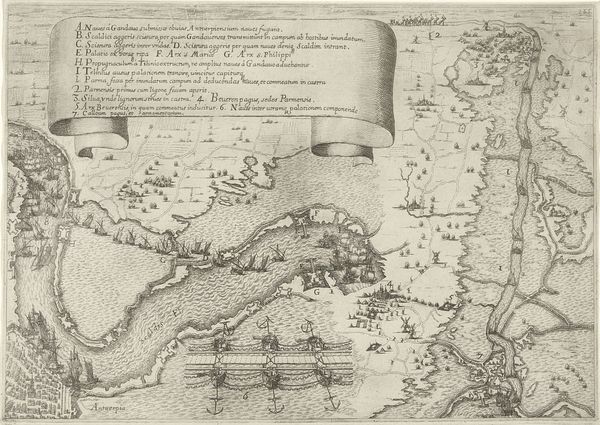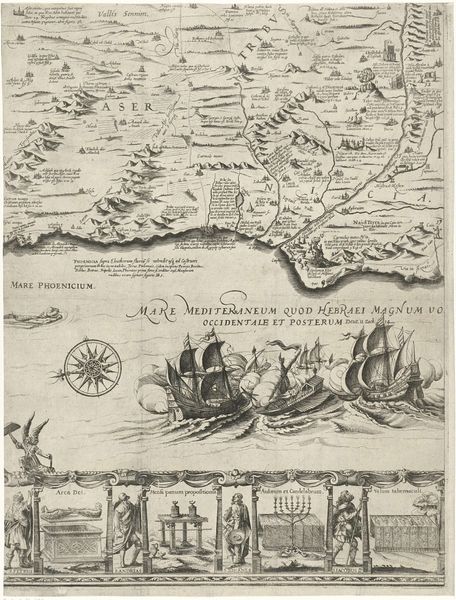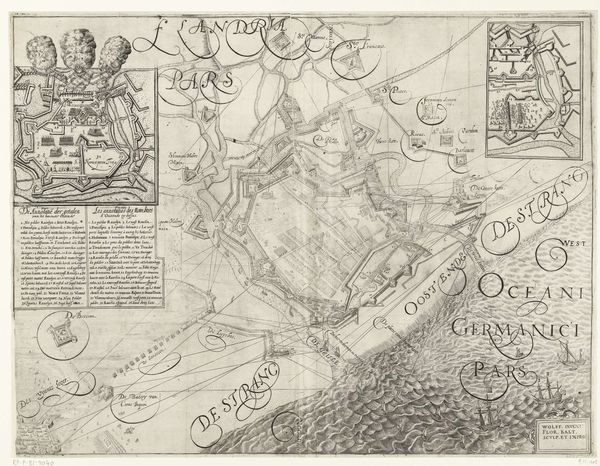
print, engraving
#
dutch-golden-age
# print
#
landscape
#
perspective
#
11_renaissance
#
geometric
#
line
#
cityscape
#
history-painting
#
engraving
Dimensions: height 450 mm, width 570 mm
Copyright: Rijks Museum: Open Domain
Editor: This engraving from 1595, titled *Beleg van Geertruidenberg, 1593* by an anonymous artist, depicts the siege of Geertruidenberg. The sheer amount of detail is fascinating; it feels like I'm looking at a map, a history lesson, and a work of art all in one. What symbolic meanings can we unpack from this scene? Curator: This print provides a fascinating look into the visual language used to depict conflict and power in the late 16th century. What do you notice about the positioning of the attacking forces in relation to the city itself? Editor: They completely surround it, forming a semi-circle by sea. It definitely shows a strategic advantage, almost like they’re swallowing the city whole. Curator: Exactly. The circle itself is a powerful symbol, representing totality, containment, and in this case, absolute control. And consider the individual ships, each a tiny symbol of Dutch naval power, asserting dominance not just over the city, but over the waterways themselves. What enduring psychological effects do you think such displays of overwhelming force had on both sides? Editor: Well, for the besieged, I imagine a feeling of helplessness and isolation. For the besiegers, a sense of righteous power, almost a divine mandate to conquer. Curator: Precisely. Images like this were powerful propaganda tools, shaping public perception of the conflict. How does this understanding change your interpretation of the print now? Editor: I see it less as a neutral record of an event and more as a carefully constructed narrative, designed to instill pride and project power. It makes me wonder about what was left out, or subtly emphasized to strengthen that narrative. Curator: And that's the power of understanding the symbolic language of images – it allows us to see beyond the surface and uncover the deeper layers of meaning embedded within them.
Comments
No comments
Be the first to comment and join the conversation on the ultimate creative platform.
